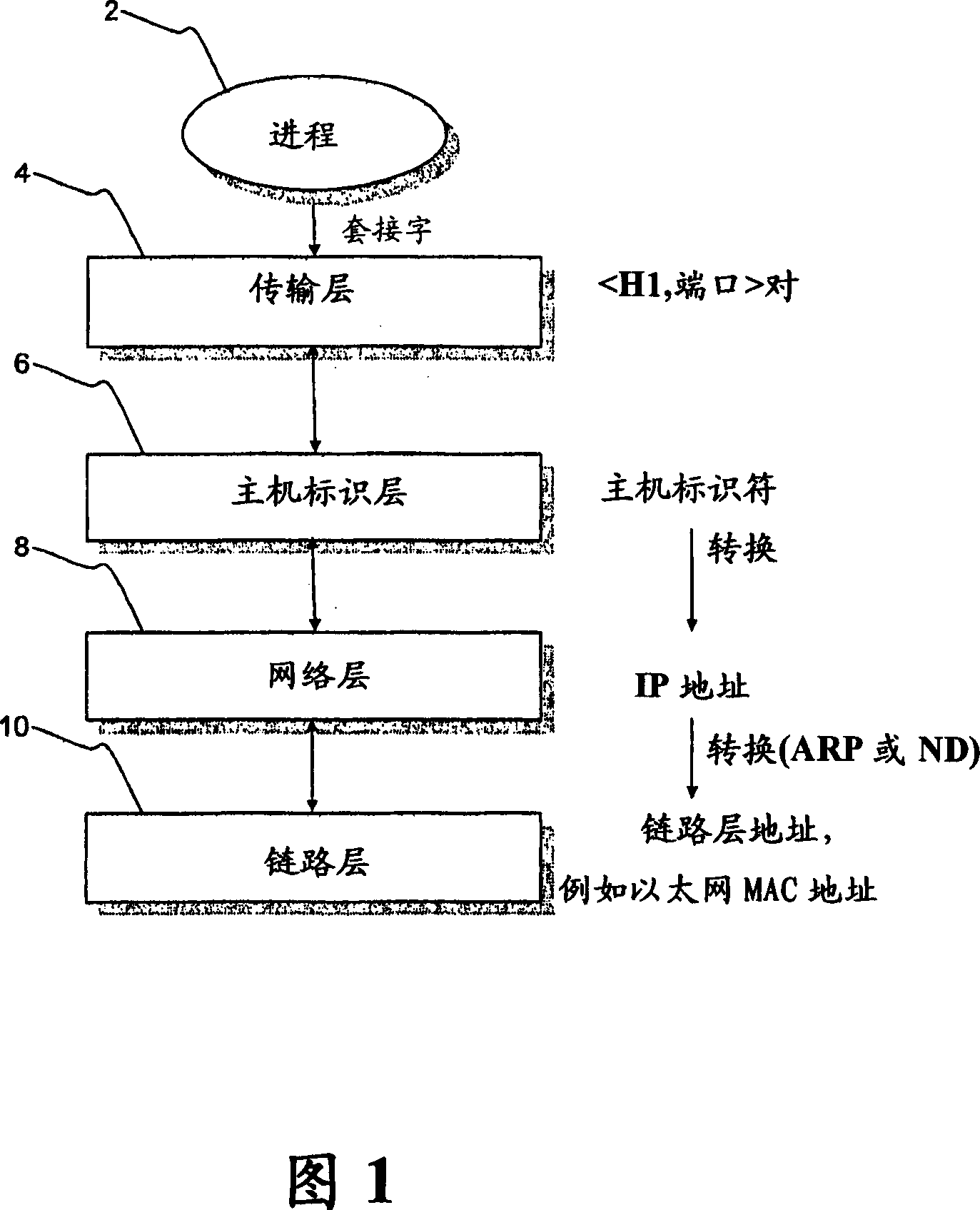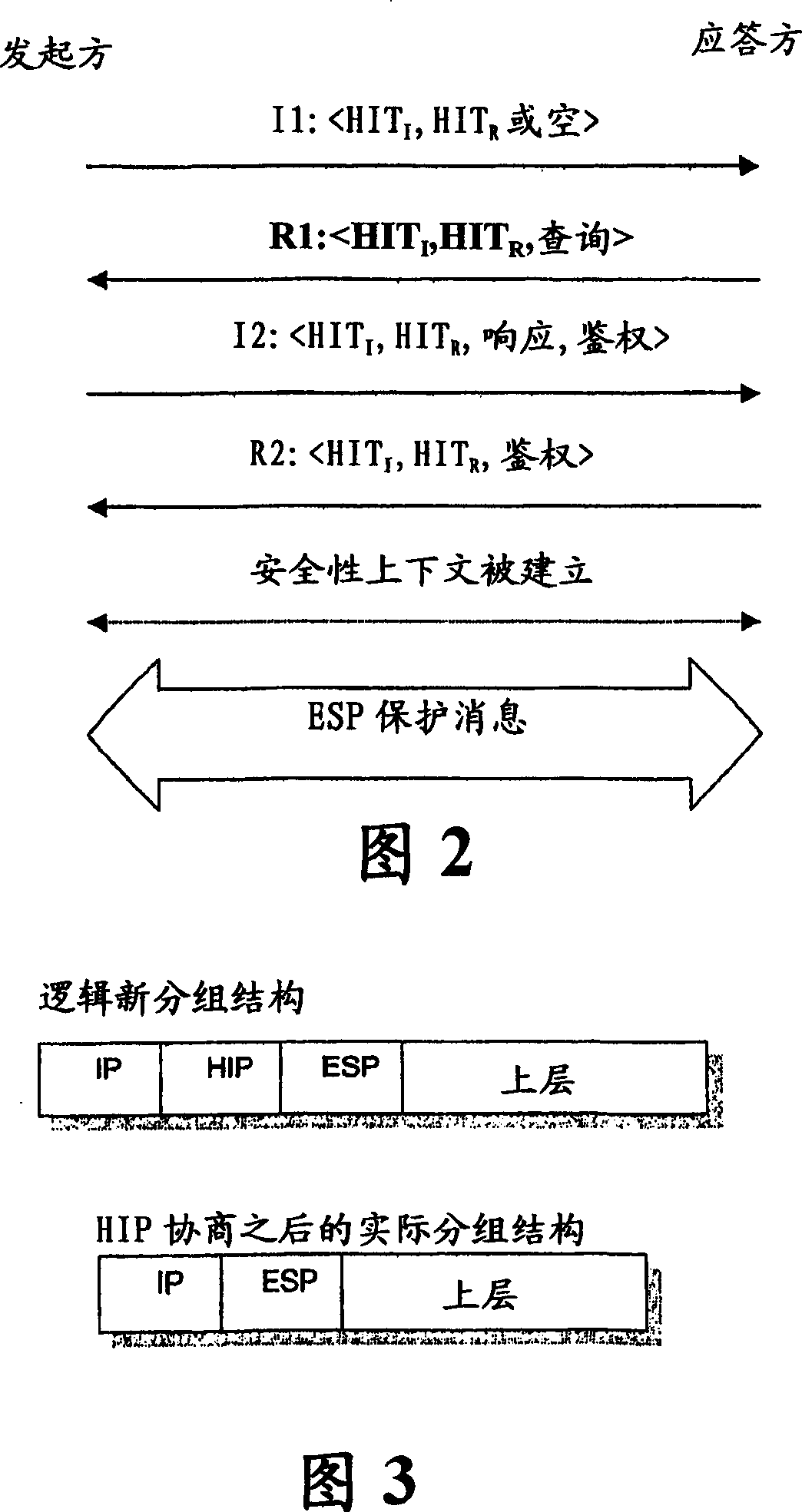Identification method and apparatus for establishing host identity protocol (hip) connections between legacy and hip nodes
A technology of host identification protocol and identification mark, which is applied in the direction of wireless network protocol, digital transmission system, data exchange network, etc., can solve the problem that the HIP node 14 and the HIP agent 16 cannot initiate HIP negotiation without knowing the HIP node 14 and the HIP agent 16.
- Summary
- Abstract
- Description
- Claims
- Application Information
AI Technical Summary
Problems solved by technology
Method used
Image
Examples
Embodiment Construction
[0082] Embodiments of the invention are described within the framework of the GPRS / UMTS network architecture shown in FIG. 6 . The principles underlying one embodiment of the invention apply to UMTS as they do to GPRS.
[0083] As mentioned above, GPRS is designed as an expansion of the existing GSM network infrastructure, and its purpose is to provide connectionless packet data services.
[0084] GPRS introduces a number of new functional units supporting end-to-end transmission of IP-based packet data on top of GSM, which will be described below.
[0085] The communication system 100 shown in FIG. 6 includes a mobile station (MS) 102 in communication with a base transceiver station (BTS) 104 which in turn communicates with a base transceiver station (BSC) 106 . BTS 104 and BSC 106 together form a Base Station Subsystem (BSS). At BSC 106 , a packet control unit (PCU, not shown) distinguishes between circuit switched data destined for telephone network 110 and packet switche...
PUM
 Login to View More
Login to View More Abstract
Description
Claims
Application Information
 Login to View More
Login to View More - R&D
- Intellectual Property
- Life Sciences
- Materials
- Tech Scout
- Unparalleled Data Quality
- Higher Quality Content
- 60% Fewer Hallucinations
Browse by: Latest US Patents, China's latest patents, Technical Efficacy Thesaurus, Application Domain, Technology Topic, Popular Technical Reports.
© 2025 PatSnap. All rights reserved.Legal|Privacy policy|Modern Slavery Act Transparency Statement|Sitemap|About US| Contact US: help@patsnap.com



